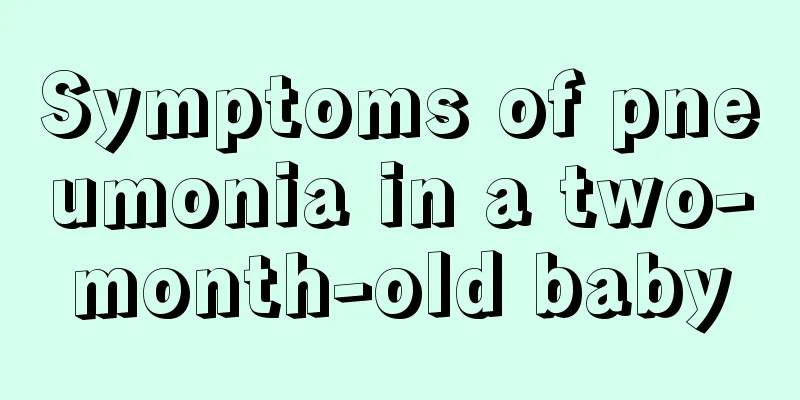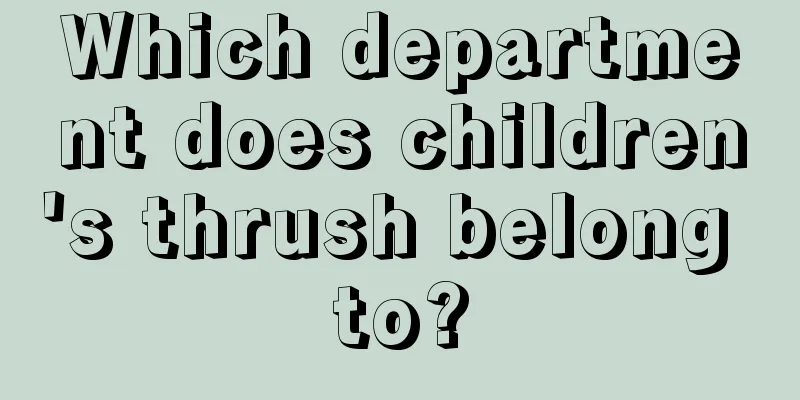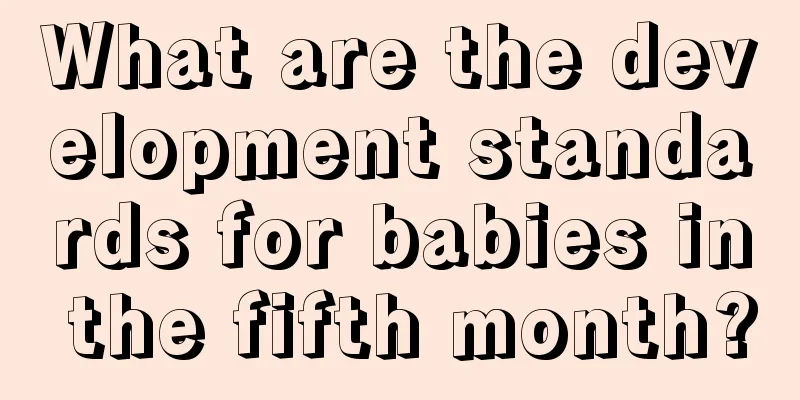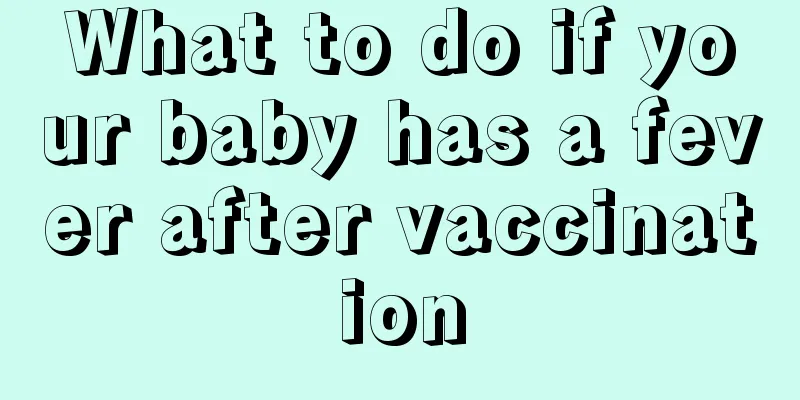Symptoms of pneumonia in a two-month-old baby

|
Nowadays, many two-month-old babies are prone to pneumonia after catching a cold, which can cause great harm to their physical health. Parents become anxious when they see their children have pneumonia. In fact, many parents do not know the symptoms of pneumonia in their babies, so they cannot detect pneumonia in the first place. Let's follow the pediatric experts to learn these basic common sense! Pediatric pneumonia mortality accounts for more than 1/5 of all child mortality, especially among infants and young children. Pneumonia also seriously affects the healthy growth of children in our country, so babies aged two months need special treatment. Pneumonia is more common in infants and young children and is currently the leading cause of death in children under 5 years old. Baby pneumonia is mostly caused by pathogenic microorganisms such as bacteria (such as Pneumococcus, Staphylococcus aureus, Escherichia coli), viruses (such as respiratory syncytial virus, influenza virus, adenovirus), and mycoplasma. Unlike general pneumonia, pneumonia in infants and young children has three major characteristics: atypical (easily confused with a cold), multiple complications (such as respiratory failure, heart failure), and high mortality rate. What are the early symptoms of pneumonia in a two-month-old baby? How do we define it? 1) Fever. Pneumonia often causes fever, which can be low-grade or high-grade. 2) Cough. This symptom is more frequent, and in the early stages it is mostly an irritating dry cough, and sputum will appear after recovery. 3) Shortness of breath. After the fever and cough, there will be shortness of breath, accompanied by symptoms of lethargy, restlessness, mild diarrhea and vomiting. 4) Difficulty breathing. The area around the mouth and nasolabial grooves are purple, the breathing is as fast as 60-80/min, and the nostrils are flaring. 1) Drug treatment. For general pneumonia, penicillin is used first, twice a day. For more serious cases, cefotaxime may be used. For those with unknown pathogens, gentamicin or ampicillin can be added. Antibiotics are generally used until the body temperature returns to normal for 5-7 days and the medication is stopped after the lung rales disappear. When you have a fever, first soak a towel in cold water and apply it to your head, or use an ice pack pillow. You can also use warm alcohol to scrub your armpits and groin. Take children's antipyretic tablets orally, or inject analgesic intramuscularly to reduce fever. Cough suppressants can be chosen from Chuanbei loquat syrup or snake gall and Chuanbei liquid. 2) Nursing diet. Give nutritious, easily digestible food according to the child's age. Breastfeeding children should mainly drink milk and can also drink some water appropriately. The milk can be diluted a little, feed less and increase the frequency of feeding. Clean the nostrils immediately after choking on milk. Children who eat can eat more nutritious, easily digestible and light foods, eat more fruits and vegetables, and drink more water. 3) Folk remedies. This prescription is suitable for children with pneumonia caused by wind-heat blocking the lungs: 2 snow pears, 4 grams of Fritillaria cirrhosa, 30 grams of crystal sugar, and 10 grams of wet bean powder. Wash the pears, peel them, remove the cores, and cut them into 12 pieces. Wash the Fritillaria cirrhosa, put the pear pieces into a steaming bowl, then put in the Fritillaria cirrhosa and rock sugar, add 50 ml of boiling water, seal the mouth of the bowl with wet cotton paper, steam it in a steamer for 2 hours, take it out, place the pear pieces on a plate, pour the original juice into the pot, add a little water, thicken it with wet bean powder, and pour it on the pears. I hope that the expert’s description in the above article can help everyone understand the symptoms of pneumonia in two-month-old babies. Observe your baby carefully in daily life. Once you find yourself showing some of the above symptoms, you should know that your baby has pneumonia. At this time, we must pay attention to treatment. The earlier the treatment, the greater the chance of recovery and the less harm the child will suffer. |
<<: Physical standards and development rules for two-year-old and five-month-old babies
>>: What to do if your child's throat is red and swollen
Recommend
What are the symptoms of Down syndrome newborns
I believe many people know that human beings are ...
What causes babies to sweat while sleeping?
In our lives, people will have different physiolo...
What to do if your child does not absorb food
Many mothers have had this confusion: their babie...
What should I do if my child has a hunchback?
As parents, of course we hope that our children c...
Is it normal for a baby to have growing teeth first?
When the baby is just born, he will not have teet...
Can babies eat purslane?
Purslane has a good disease prevention effect on ...
Childhood spasms that cannot be ignored
Spasm is the epilepsy disease that everyone is fa...
What to do if you have frequent night terrors
Night terrors are a very common disease in daily ...
What are the symptoms of iron deficiency in children?
As we all know, human life activities require the...
What are the dangers of eating MSG for children?
Children are very demanding about food because th...
How to improve memory in teenagers
Nowadays, many teenagers are experiencing a decli...
My seven-month-old baby can't sit steadily. What's going on?
Mom and dad play a very important role in the bab...
Children's legs are often bruised
In life, many parents often find that their babie...
Why does a child's tongue blister?
The issue of blisters on the tongue in children i...
How to treat bedwetting in children? These remedies are effective
Many parents think that it is normal for children...









